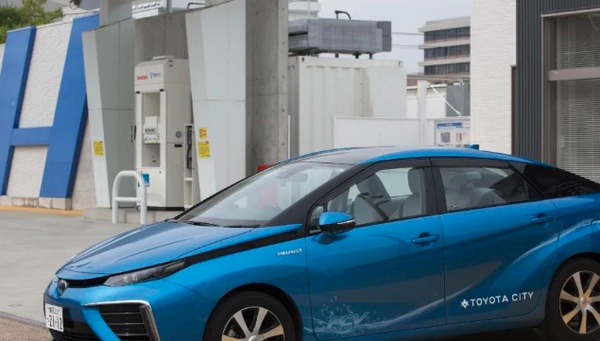Sharp decline in production and sales, major players exit: What is the Future of Hydrogen Vehicle Commercialization?
Hydrogen fuel cells, with their advantages of zero carbon emissions, efficient refueling, and long driving range, are regarded by many as the ultimate answer for new energy vehicles. Major OEMs like Toyota, Hyundai, BMW, and Stellantis have invested heavily in the hydrogen energy sector and have launched numerous mass-produced models.
However, there is always a difficult gap to cross between beautiful ideas and reality.
In recent years, the development of hydrogen fuel cell vehicles globally is encountering bottlenecks, with the pace of promotion far below expectations. It faces multiple obstacles such as high costs, lack of infrastructure, key technical challenges, and fierce competition from pure electric vehicles.
OEM's Predicament
Recently, Stellantis Group announced that it has decided to terminate its hydrogen fuel cell technology development project.
Stellantis expects that hydrogen fuel light commercial vehicles will not achieve large-scale commercialization before 2030, mainly due to the lack of hydrogen refueling infrastructure, high investment, and insufficient consumer purchase incentives.
Due to the above reasons, Stellantis will stop the plan to launch a new generation of hydrogen fuel commercial vehicles this year and will also cancel the production capacity of its two existing models.
Obviously, for Stellantis, hydrogen fuel cells have already become a bottomless pit, and timely loss-cutting is a rational choice.
According to foreign media reports, Stellantis has previously stopped its investment in the hydrogen fuel cell company Symbio. Symbio is a joint venture established in 2019 by Michelin and Faurecia, in which Stellantis holds shares. Symbio has built the largest hydrogen fuel cell production base in Europe, and according to plans, the production capacity of this base will expand to 50,000 units by 2026.
The commercialization of any new technology is difficult to achieve success without the support and promotion of OEMs. With Stellantis's exit, the future of the hydrogen fuel cell vehicle market in Europe is shrouded in uncertainty.
In the United States, as a pioneer in the hydrogen energy field, Toyota has recently encountered some troubles. Hundreds of Toyota MIRAI owners in California have jointly sued Toyota and several related parties, alleging that they misled consumers regarding the hydrogen fuel vehicle refueling network.

Originally, the California government had promised to invest heavily in building a hydrogen network, but as of now, there are only 50 hydrogen stations in California, which far from meets consumer demand, and most of these hydrogen stations are no longer operational.
Additionally, with the rising prices of hydrogen fuel, car owners can no longer afford the high operating costs, with the cost of a single refueling skyrocketing from the previous $70 to nearly $200 today. Moreover, these car owners also have to bear the hefty loans resulting from the high prices of hydrogen fuel vehicles.
Therefore, the criticism from hydrogen fuel vehicle owners in California towards Toyota is understandable, as they have pushed a technology that is not yet mature into the market without long-term support and planning.
Where is the path to commercialization?
Focusing on the Chinese market, the market development of hydrogen fuel vehicles has also fallen short of expectations.
According to data released by the China Automobile Manufacturers Association, the production of hydrogen fuel cell vehicles in June was 188 units, a year-on-year decrease of 81.5%; sales were 251 units, a year-on-year decrease of 76.4%.
In the first half of this year, the cumulative production of hydrogen fuel cell vehicles was only 1,364 units, a year-on-year decrease of 47.2%; the cumulative sales were only 1,373 units, a year-on-year decrease of 46.8%.
This year's annual hydrogen fuel cell conference FCVC saw many participants commenting that the number of exhibitors had decreased, the audience was sparse, and there were not many eye-catching new technologies on display.
The obstacles to commercialization have also led to increasing losses for many companies in the industry chain. For example, Yihuatong, known as the "first hydrogen energy stock," experienced a decline in both revenue and net profit in 2024, marking five consecutive years of losses, with last year's loss expanding to 456 million yuan.
In 2020, five departments jointly issued the "Notice on Carrying Out Demonstration Applications of Fuel Cell Vehicles," vigorously promoting the development of the hydrogen energy sector. Now, the industry is facing a stage where old policies have expired and new policies have not yet been released, only hoping that the new round of policies can inject new vitality into the hydrogen fuel industry chain.
【Copyright and Disclaimer】The above information is collected and organized by PlastMatch. The copyright belongs to the original author. This article is reprinted for the purpose of providing more information, and it does not imply that PlastMatch endorses the views expressed in the article or guarantees its accuracy. If there are any errors in the source attribution or if your legitimate rights have been infringed, please contact us, and we will promptly correct or remove the content. If other media, websites, or individuals use the aforementioned content, they must clearly indicate the original source and origin of the work and assume legal responsibility on their own.
Most Popular
-

At Least 44 Dead in Century-Old Fire! Questioning Hong Kong's Hong Fu Garden: Why Has the Path to Fire Resistance Taken 15 Years Without Progress?
-

Satellite chemical's profits surge! can the 26.6 billion yuan high-end new materials project meet expectations? a review of progress on four major projects
-

Key Players: The 10 Most Critical Publicly Listed Companies in Solid-State Battery Raw Materials
-

Estun Turns Profitable in 2025 Half-Year Report, Industrial Robot Shipments Rank First Among Domestic Brands
-

Avatr Files for IPO on HKEX, Plans to Complete Listing in Q2 2026






